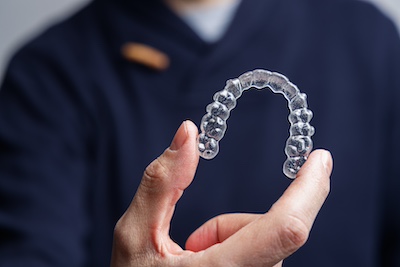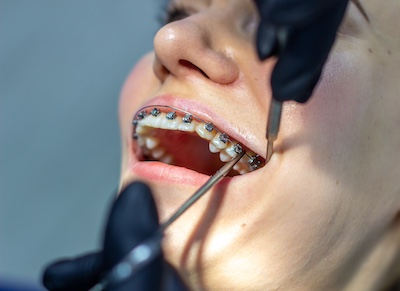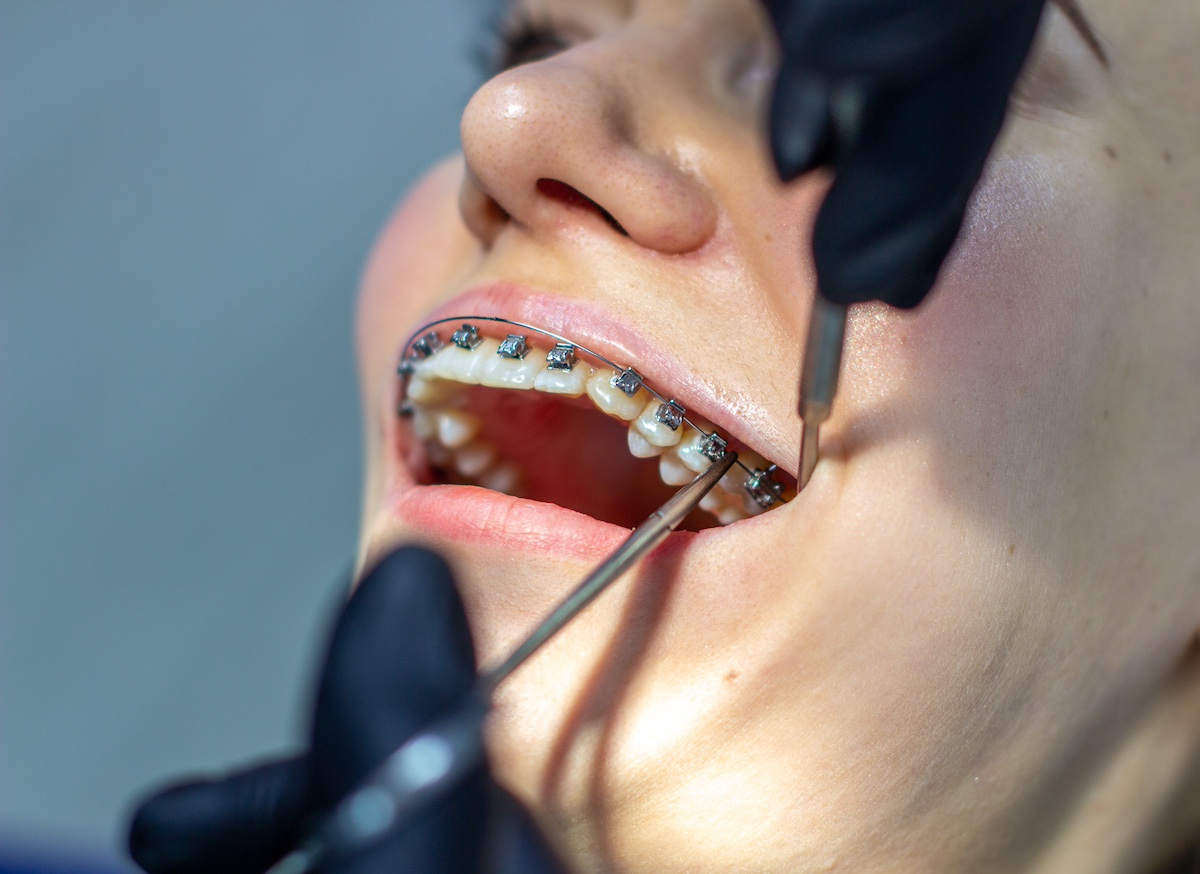Effectiveness of Invisalign vs Metal Braces
When it comes to straightening teeth, both Invisalign and traditional metal braces bring their strengths to the table. Metal braces employ a system of brackets and wires that an orthodontist adjusts periodically to move teeth into the desired position.
This method applies consistent pressure to teeth, which can accelerate the movement of teeth compared to other methods. Generally, treatment with metal braces can last anywhere from one to three years, but this duration heavily depends on the individual’s alignment issues.
In contrast, Invisalign uses a series of clear, removable aligners that are custom-fitted to the patient’s teeth. These aligners are replaced every few weeks to continue teeth movement. The major benefit here is the aesthetic discretion they offer, being nearly invisible.
They apply pressure more evenly across the teeth than metal braces, which can be advantageous for certain alignment corrections. However, Invisalign might not be the quickest option for more complex dental issues, such as severe bite corrections.
The treatment duration for Invisalign typically ranges from six months to two years, reflecting the less intensive pressure application compared to traditional braces.
The type of orthodontic issue at hand significantly influences the choice between Invisalign and metal braces. Metal braces are perhaps better suited for more complex dental problems because they can exert a stronger and more precise force on individual teeth.
For simpler cases or those where aesthetics are a concern, Invisalign provides an effective and virtually unnoticeable treatment method.
Whether opting for the traditional route with metal braces or going for the sleek invisibility of Invisalign, understanding their mechanics and effectiveness can lead to a more personalized and satisfactory orthodontic experience.
Each method’s suitability also ebbs and flows with the person’s lifestyle, with Invisalign offering more flexibility to remove the aligner during meals or important social engagements.

Aesthetics and Comfort Considerations
In the realm of aesthetics and comfort, invisible braces like Invisalign often shine, especially among adults who might feel self-conscious about sporting the more noticeable metal braces. This nearly invisible option allows wearers to continue their daily lives without feeling like all eyes are on their orthodontic treatment.
Their subtlety boosts user confidence and satisfaction, blending seamlessly with professional and social interactions. People love that they can smile in business meetings or social gatherings without braces overshadowing their teeth.
On the comfort front, users of Invisalign enjoy the absence of metal brackets and wires, which can sometimes cause mouth irritation in traditional braces wearers. With Invisalign, these concerns are vastly reduced. The smooth, plastic aligners gently coax teeth into place without the risk of catching on soft tissue.
Maintaining oral hygiene is also easier with removable aligners. Without the nooks and crannies of brackets and wires where food particles can lodge, wearers can simply remove the aligner, enjoy their meal, and clean their teeth efficiently before putting the aligner back in. This promotes better oral health and avoids the common brace-related restrictions on certain foods.
Nevertheless, it’s not all smooth sailing. Those who opt for invisible braces must wear them for the recommended 20-22 hours per day which requires discipline. They must also get into the routine of regularly cleaning their aligners to avoid discoloration or reduced effectiveness.
Despite these considerations, for many, the trade-off for a less intrusive, more comfortable orthodontic experience is worth it.

Cost and Accessibility of Invisalign vs Metal Braces
When considering the financial implications, traditional metal braces typically represent a more economical option. Costs for metal braces can range from $1,700 to $6,000, an appealing price point particularly noted by families and individuals budgeting for straightforward correction needs.
Invisalign, on the other hand, sits at a higher range, often between $2,400 and $9,000, depending heavily on the complexity of the treatment.
However, it’s not just about the initial price. Insurance plays a critical role in shaping these costs. Many dental insurance plans categorize traditional metal braces under essential orthodontic care, thus offering substantial coverage.
Invisalign, considered by some providers as a cosmetic option, might receive less coverage, leading patients to shoulder a larger portion of the bill. Navigating these financial waters demands clear conversations with insurance providers to understand what aspects of your treatment are covered.
Beyond the cost comparisons, treatment flexibility also influences decisions. Metal braces require ongoing and timely visits to the orthodontist — typically once a month — making them less compatible with demanding schedules or for those living in areas without immediate access to an orthodontist’s office.
Such frequent office visits foster significant commitments to timely adjustments and ensure that progress is carefully monitored.
On the flip side, Invisalign offers an appealing level of flexibility. Aligners are shipped directly to the patient’s home with clear instructions on when to switch them out, reducing the number and frequency of in-office visits.
This remote management possibility is particularly attractive to busy professionals or individuals in remote areas. It embodies a modern approach to orthodontics that prizes both efficiency and convenience without sacrificing the quality of care. Plus, the chance to avoid a waiting room now and then is a convenience that many cherish.
Compounded with the reduced visual impact, the convenience of being able to remove the aligner during meals or important social occasions, and how it sidesteps complications with food restrictions and oral hygiene issues linked to traditional braces, clear aligners present a compelling case to those opting for discretion and ease in their orthodontic journey
This positions Invisalign as a preferred option for those who can maneuver the higher cost for greater personal convenience and time management afforded by remote check-ins and fewer office visits.

Invisalign vs Metal Braces: Which Is Best for You?
Ultimately, both metal braces and invisible aligners offer effective solutions with distinct advantages and considerations in terms of cost, coverage, and flexibility.
Personal situations — whether driven by budget, lifestyle, or geographic location — heavily dictate the best route to take toward achieving a smile that not only reflects confidence but is structured in harmony with practical life considerations.
- Papadimitriou A, Mousoulea S, Gkantidis N, Kloukos D. Clinical effectiveness of Invisalign® orthodontic treatment: a systematic review. Prog Orthod. 2018;19(1):37.
- Ke Y, Zhu Y, Zhu M. A comparison of treatment effectiveness between clear aligner and fixed appliance therapies. BMC Oral Health. 2019;19(1):24.
- Weir T. Clear aligners in orthodontic treatment. Aust Dent J. 2017;62 Suppl 1:58-62.








